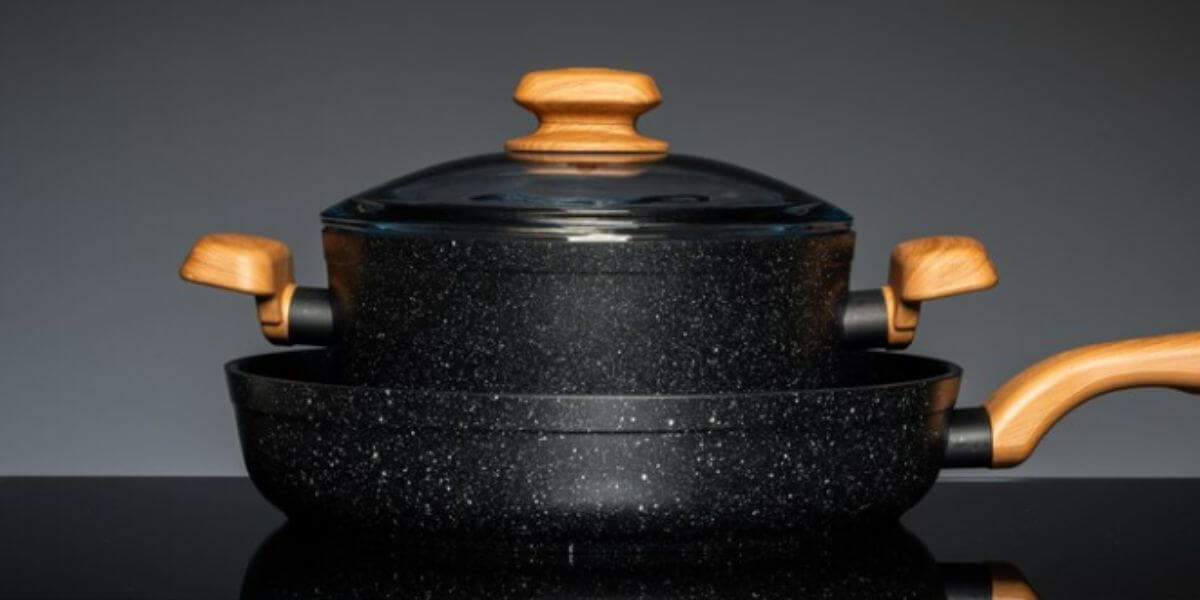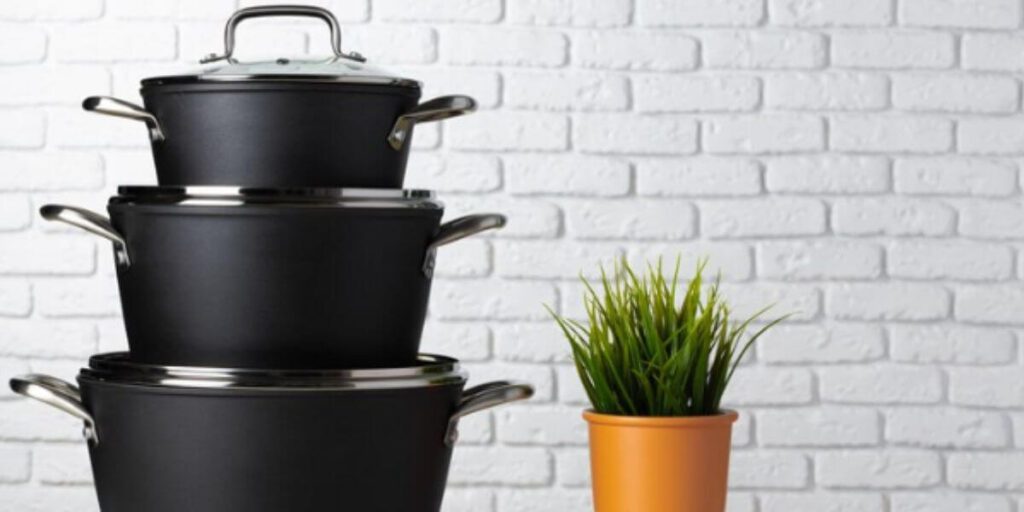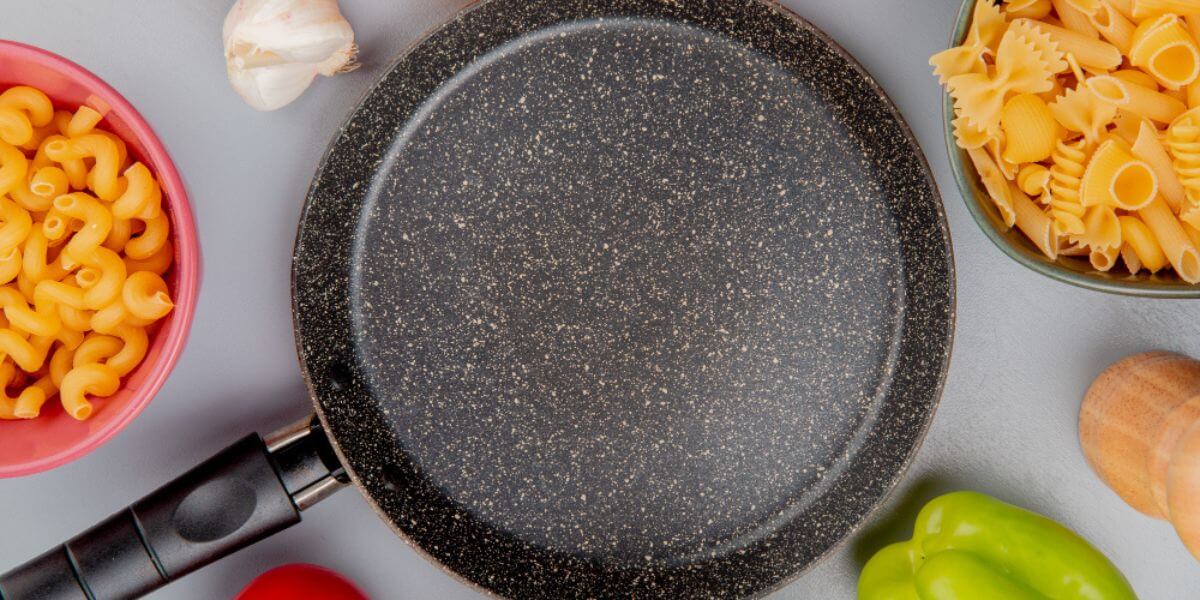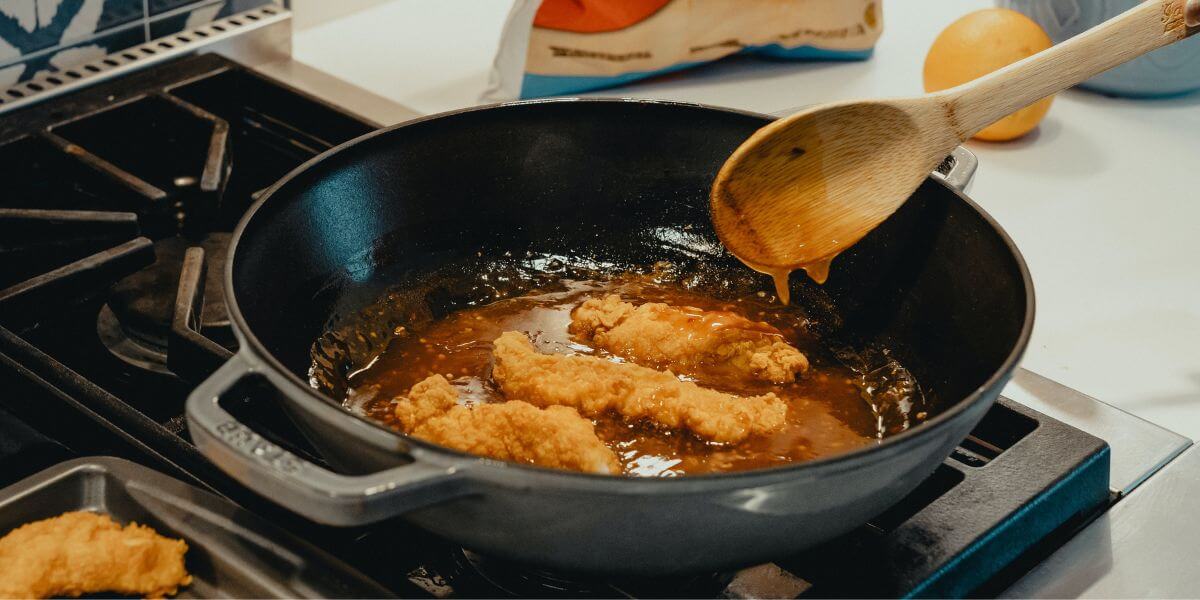Dutch Oven vs Stock Pot: Which One Will Be Better?


If you’re an avid cook or enjoy spending time in the kitchen, you’ve likely come across Dutch oven vs stock pot at some point. These kitchen tools are versatile and essential for preparing many delicious dishes. This article will explore the key differences between a Dutch oven and a stock pot, exploring their unique features, uses, and advantages. So, whether you’re a seasoned chef or an enthusiastic home cook, read on to discover which culinary powerhouses best suit your needs.
Introduction
Regarding cooking equipment, having the right tools can make a significant difference in your culinary adventures. A Dutch oven and a stock pot are popular choices that can handle various cooking tasks with finesse. While they may appear similar at first glance, they have distinct characteristics that set them apart.
Definition of Dutch Oven
A Dutch oven is a heavy, lidded pot typically made of cast iron or enameled cast iron. It features thick walls and a tight-fitting lid, which helps retain heat and moisture during cooking. Dutch ovens are known for their excellent heat retention and distribution, making them ideal for slow cooking, braising, baking, and frying.

Pros and Cons of Dutch Oven
Pros:
- Excellent heat retention and distribution
- Versatile cooking methods (braising, baking, frying)
- The transition from stovetop to oven
- Ideal for slow-cooked dishes and one-pot meals
Cons:
- Heavy and bulky
- Higher price point
- Requires seasoning and careful maintenance
Recommended Dutch Ovens: Elevate Your Cooking Game
If you’re in the market for a Dutch oven, you’re on the path to unlocking a world of culinary possibilities. With their exceptional heat retention and versatility, Dutch ovens are essential tools for any cooking enthusiast. To help you make an informed decision, we’ve curated a list of four highly recommended Dutch ovens, highlighting their pros and cons. Whether you’re a seasoned chef or a home cook, these Dutch ovens will elevate your cooking game.
Le Creuset Signature Enameled Cast Iron Dutch Oven
The Le Creuset Signature Enameled Cast Iron Dutch Oven is a beloved classic known for its exceptional performance and timeless design. With a capacity range of 3.5 to 13.25 quarts, it offers options for various cooking needs. The enamel coating provides a non-stick surface and resists chipping and staining. However, the Le Creuset Dutch Oven comes with a higher price tag than other options on the market.
PROS
CONS
Lodge Enameled Cast Iron Dutch Oven
The Lodge Enameled Cast Iron Dutch Oven is a popular choice among home cooks seeking a reliable and affordable option. Its vibrant colors and various sizes (ranging from 1.5 to 7.5 quarts) offer versatility and style. The enamel coating ensures easy cleaning, while the cast iron construction provides excellent heat retention. However, being an enameled cast iron Dutch oven, it is slightly heavier compared to non-enameled alternatives.
PROS
CONS
Staub Cast Iron Dutch Oven
The Staub Cast Iron Dutch Oven is a French-made gem known for its craftsmanship and performance. With its iconic design and wide range of color options, it adds a touch of elegance to any kitchen. The cast iron construction ensures excellent heat retention and distribution, while the enamel coating provides a durable and easy-to-clean surface. However, it’s worth noting that the Staub Dutch Oven tends to be on the higher end of the price spectrum.
PROS
CONS
Definition of Stock Pot
On the other hand, a stock pot is a large, deep pot usually made of stainless steel or aluminum. It is designed to hold a significant volume of liquid, perfect for preparing stocks, soups, stews, and boiling pasta. Stock pots often come with a tight-fitting lid and sturdy handles for easy maneuverability.


Pros and Cons of Stock Pot
Pros:
- Generous capacity for cooking large quantities
- Efficient heat distribution for boiling and simmering
- Ideal for making stocks, soups, and boiling pasta
- More affordable price range
Cons:
- Limited versatility in cooking methods
- Less heat retention compared to Dutch ovens
- Bulkier and requires ample storage space
Recommended Stock Pots: Your Kitchen’s Culinary Companion
If you’re an avid cook or enjoy hosting dinner parties, a reliable stock pot is an essential tool in your kitchen. Perfect for simmering soups, boiling pasta, or preparing large batches of stock, a quality stock pot can make all the difference in your culinary adventures. To help you make an informed choice, we’ve compiled a list of four highly recommended stock pots, highlighting their pros and cons. From durability to capacity, these stock pots will meet your cooking needs and elevate your kitchen game.
All-Clad Stainless Steel Tri-Ply Bonded Stock Pot
The All-Clad Stainless Steel Tri-Ply Bonded Stock Pot is a top-of-the-line option known for its exceptional performance and durability. With its tri-ply construction and aluminum core, heat is evenly distributed throughout the pot, ensuring consistent cooking results. The stock pot comes in various sizes, accommodating different cooking needs. However, the higher price tag may be a consideration for budget-conscious buyers.
PROS
CONS
Calphalon Contemporary Hard-Anodized Aluminum Nonstick Stock Pot
The Calphalon Contemporary Hard-Anodized Aluminum Nonstick Stock Pot combines durability with convenience. The hard-anodized aluminum construction ensures even heating, while the nonstick interior allows for easy food release and effortless cleaning. The comfortable handles remain cool during stovetop cooking, providing a secure grip. It’s important to note that this stock pot is incompatible with induction cooktops.
PROS
CONS
Farberware Classic Stainless Steel Stock Pot
The Farberware Classic Stainless Steel Stock Pot offers home cooks a reliable and budget-friendly choice. With its stainless steel construction and aluminum core, heat is evenly distributed throughout the pot, preventing hot spots. The tight-fitting lid helps seal moisture and flavors, while the stock pot’s dishwasher-safe design allows easy cleanup. However, some users have experienced discoloration over time, and caution should be exercised as the handles may get hot during cooking.
PROS
CONS
Purpose and Uses
Dutch ovens and stock pots have overlapping purposes but excel in different culinary domains. A Dutch oven is a true workhorse in the kitchen, capable of tackling a wide range of cooking techniques. It is well-suited for long, slow-cooked dishes like hearty stews, braised meats, and baked bread. The Dutch oven’s ability to distribute heat evenly ensures that the food cooks uniformly and develops rich, deep flavors.
On the other hand, a stock pot shines in tasks that require boiling, simmering, or blanching large quantities of liquid. Its generous capacity allows for preparing homemade stocks, broths, soups, and large-scale pasta dishes. With a stock pot, you can effortlessly feed a crowd or prepare meals in advance, making it an excellent choice for meal prepping and entertaining.
Materials and Construction
Dutch ovens are commonly made of cast iron or enameled cast iron, which provides exceptional heat retention and even heat distribution. The heavy construction allows for steady cooking temperatures and enables the Dutch oven to be used on stovetops and ovens. Enameled cast iron Dutch ovens offer the additional benefit of a non-reactive cooking surface and easy cleanup.
Stock pots are typically crafted from stainless steel or aluminum. Stainless steel stock pots are prized for their durability, corrosion resistance, and ability to withstand high temperatures. Aluminum stock pots are lighter in weight, heat up quickly, and are highly responsive to changes in heat settings.
Heat Distribution
One of the critical factors to consider when choosing between a Dutch oven and a stock pot are heat distribution. Dutch ovens excel in providing even heat distribution throughout the cooking process. The cast iron material absorbs heat evenly and distributes it, resulting in consistent cooking temperatures. This feature is especially advantageous for recipes that require long, slow cooking, as it ensures that the food is uniformly cooked and infused with flavors.
On the other hand, stock pots are designed to heat up rapidly and maintain a vigorous boil. Their construction materials, such as stainless steel or aluminum, conduct heat efficiently and evenly across the pot’s surface. This quality is ideal for recipes that call for rapid boiling or simmering, where precise temperature control is less crucial.
Cooking Methods
Due to their unique features, Dutch ovens and stock pots lend themselves to different cooking methods. Dutch ovens are versatile and can be used for braising, roasting, baking, frying, and making soups and stews. Their ability to retain heat makes them an excellent choice for recipes that require extended cooking times at low temperatures.
Stock pots are primarily used for boiling, simmering, and creating large batches of liquid-based dishes. They are perfect for making stocks, broths, soups, cooking pasta, blanching vegetables, and preparing seafood boil. Their spacious design allows for easy stirring and prevents liquid from boiling over.
Versatility
Regarding versatility, Dutch ovens have a slight edge over stock pots. Their ability to transition seamlessly from stovetop to oven expands their range of cooking techniques. Dutch ovens can be used to sauté ingredients, then transferred directly into the oven for braising or slow cooking. Additionally, their snug-fitting lids help trap moisture, resulting in tender, succulent dishes.
While less versatile in cooking methods, stock pots excel in handling large volumes of liquid. It makes them indispensable for preparing stocks and soups and cooking pasta for large gatherings. Their spacious interior allows for even cooking and efficient heat distribution, ensuring that all ingredients are cooked uniformly.
Capacity and Size Options
Dutch ovens and stock pots are available in various sizes to accommodate different cooking needs. Dutch ovens typically range from 2 to 8 quarts, with 5.5 quarts being a popular size for everyday cooking. The capacity you choose depends on your household size, the recipes you plan to prepare, and the amount of storage space available in your kitchen.
Stock pots come in larger sizes, starting from 8 quarts and going up to 20 quarts or more. The size you opt for should align with your cooking ambitions, whether you frequently entertain guests or enjoy preparing large batches of homemade broth or soup for freezing.
Cleaning and Maintenance
Dutch ovens and stock pots require proper care and maintenance to ensure longevity. Dutch ovens made of cast iron or enameled cast iron should be seasoned or cured before use to prevent rust and promote a non-stick cooking surface. Cleaning a Dutch oven involves gentle hand washing with mild soap and avoiding harsh abrasives or dishwashers that can damage the enamel coating.
Stock pots, typically made of stainless steel or aluminum, are dishwasher-safe and easy to clean. However, hand washing is recommended to maintain their shine and prevent discoloration. Stainless steel stock pots may require occasional scrubbing with a mild abrasive to remove stubborn stains or discoloration.
Price Range
When comparing Dutch ovens and stock pots, the price range can be a significant factor for many buyers. Dutch ovens, especially those made of enameled cast iron, are more expensive due to their high-quality construction and durability. The price range for a Dutch oven can vary from around $50 for bare cast iron models to several hundred dollars for premium enameled cast iron options.
On the other hand, stock pots are generally more affordable, with a wide range of options. Stainless steel stock pots are typically more budget-friendly than their cast iron counterparts, with prices starting as low as $30 and going up depending on the size and brand.
Conclusion
In conclusion, Dutch ovens and stock pots are indispensable kitchen tools, each with unique strengths. Dutch ovens excel in versatility, heat retention, and the ability to transition seamlessly between stovetop and oven. They are a solid choice for those who enjoy slow-cooked, flavor-packed dishes. On the other hand, stock pots shine in large-scale cooking, boiling, and simmering tasks, making them ideal for preparing stocks and soups and feeding a crowd.
When choosing between a Dutch oven and a stock pot, consider your cooking preferences, the types of recipes you frequently prepare, and your budget. Both options offer exceptional utility and can elevate your culinary creations. Whether you invest in a Dutch oven or a stock pot, having one of these kitchen workhorses will undoubtedly expand your culinary horizons.
Frequently Asked Questions
Can I use a Dutch oven for boiling water or making pasta?
Dutch ovens are versatile enough to handle boiling water and cooking pasta. Their excellent heat retention and large capacity make them suitable for these tasks.
Can I use a stock pot in the oven?
While stock pots are primarily designed for stovetop cooking, some stock pots with oven-safe handles can be used in the oven. However, checking the manufacturer’s guidelines for your specific model is essential.
Is a Dutch oven worth the investment?
Many home cooks and professional chefs consider Dutch ovens a worthwhile investment due to their versatility, durability, and ability to create flavorful dishes. However, it ultimately depends on your cooking preferences and budget.
Can I use a stock pot for braising or slow cooking?
Stock pots are not ideal for braising or slow cooking. Their thin walls and less effective heat retention make them less suitable for these cooking methods. A Dutch oven would be a better option for such recipes.
Can I use a Dutch oven on an induction cooktop?
Yes, many Dutch ovens are compatible with induction cooktops. However, it’s crucial to ensure that the specific Dutch oven you choose is labeled as induction-compatible or has a magnetic base for proper heat transfer.





